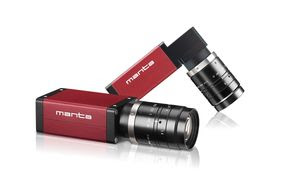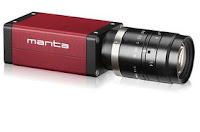Sony’s Pregius image sensor line has continued to expand to higher resolutions and sizes.
The latest 12 megapixel, Pregius IMX304 sensor has a 3.45um pixel pitch which requires a 1.1″ lens to prevent vignetting.
In order to obtain optimal contrast within an image using this sensor, a lens supporting at least 145 line pairs / mm must be used.
The lenses are optimized for down to 3.1um pixel pitch images. Use of state of the art optical technology enables high contrast and high resolution from the center to edges of the lens, despite the large lens aperture.
Examples below
The image to the left demonstrates improper pairing of a lens without enough performance to adequately resolve the size of the pixels on the camera. Zooming into the given areas shows lack of contrast
The image to the right demonstrates the performance of the Tamron 1.1″ lens on the new 12MP, 3.45um pixel pitch image sensors. Zooming into the given areas show high contrast in the center and edges of the lens.
Alternative solutions prior to now would be to use a 4/3″ or F-mount lens which are very expensive. If a 1″ format was used, you will have vignetting on 5% of the edges of the lens. This lens is the best solution for the larger 1.1″ sensors!
Key Features include
- Compatible up to 1.1″ C-mount cameras: Compatible with image sensors up to 1.1″ formats and image circle diameters of 17.4mm (effective image circle diameter to 17.6mm).
- Industrial leading high contrast and resolution: Compatible with 3.1um pixel pitch image sensors, up to 1.1″ sensors. Perfect for Sony Pregius IMX304, 12 megapixel sensors.
- Lens designed for High-Fidelity imaging: Uniform high contrast and resolution from the corners to the center despite the large aperture size. Provides 160 lp/mm in the centers.
- Combination of advanced coating technology: Integration of advanced techniques such as broad band anti-reflection coatings are used, additionally allowing for high image quality at close distances.
- Enhanced Functionality and Utility: Well tuned rotation torque of both focus and iris control rings facilities smooth adjustments. Lock mechanisms on the rings can be positioned at a choice of tree lock positions.
Interested in cameras using the new
Sony Pregius IMX304 12 Megapixel image sensor?
A list of current cameras with this sensor are below:
Allied Vision cameras
Manta G-1236 – GigE, 4112 x 3008, 9.7 fps,
Teledyne Dalsa cameras
Genie Nano M4020 / C4020 (Coming soon!)

